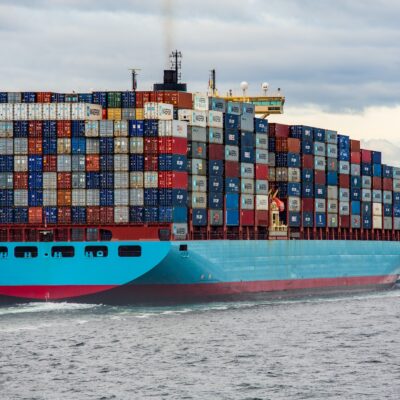

Levy a tariff on all imports that rises until trade is balanced
RECOMMENDED READING
What’s the Problem?
America imports massively more than it exports, leaving us deeply indebted to our trading partners.
Rather than exchange American goods for foreign goods, we import on credit, sending back IOUs and ownership of our economy, which future generations will pay for.
In the process, we allow the erosion of American industry and innovation, the decline of manufacturing employment, and the collapse of communities.
Mortgaging Our Future
Economists have long promoted the idea that goods should be made wherever is cheapest and that trade deficits are benign and self-correcting. They were wrong. Thirty years of escalating trade deficits have led to more than $13 trillion of trade debt. As a result, production jobs in manufacturing have declined by 35%, tearing the social fabric in countless communities. With industrial decline has come a collapse in domestic investment and a shocking surge in “deaths of despair” concentrated among middle-aged Americans without college degrees.
Some economists argue that foreigners buying up American assets instead of goods is a positive: “Investment in America.” If foreign capital were used to enhance our productive capacity, it might be a fair trade—but that is not the case. In 2020, 96% of Foreign Direct Investment went to acquisitions rather than expansions or new enterprises. Foreigners are simply buying up our debt, equities, and real estate, laying claim to the nation’s future prosperity.
What’s the Solution?
Policymakers have several options to bring American trade into balance.
One is for Congress to pass a law establishing a “Global Tariff” on imports. Legislation should direct the Department of Commerce to impose a simple, uniform tariff on all imports, beginning at 10%.
For any year that America continues to run a trade deficit, the tariff would increase by five percentage points for the following year. For any year when trade is in balance or surplus, the tariff can decline by five points the following year.
Restoring Balance to Trade
This approach creates predictable incentives for market-based domestic investment.
Without telling anyone where or when to invest, the tariff shifts the competitive landscape in favor of domestic producers relative to foreign, often heavily subsidized producers. Likewise, foreign producers will choose to relocate their own operations to America when doing so does not raise their costs by more than the tariff ’s amount.
Both foreign producers and domestic consumers will pay part of the tariff, but the entire amount is tax revenue that can be reinvested in America.
Tariff revenue can offset higher costs to consumers—for instance, by reducing sales taxes—and also fund domestic infrastructure and research that will make American producers more competitive.
Frequently Raised Objections
“The tariff will prop up uncompetitive industries.”
Tariffs don’t create monopolies or provide special favors to particular firms; all of today’s market forces will remain in effect. American producers will still be competing against each other to innovate and drive down cost, and they will be competing on much fairer footing against foreign firms that often receive large subsidies themselves.
“The tariff will start a trade war.”
America is already in a trade war—that’s why our trade deficit ballooned in the first place. The only question is whether we are going to defend our own interests while we still have the economic power to do so.
“The tariff will raise prices for Americans.”
Even very large tariffs have barely detectable short-term effects on consumer prices, and every dollar of tariffs can go toward reducing other taxes or costs that families face. In practice, much of the tariff ’s cost will be borne by foreign producers who must cut price to compete in our market, which economists found to be the case when President Trump imposed tariffs on China. In the long run, as firms invest in domestic capacity and innovation, consumers may even benefit from lower prices as a result.
Further Reading
Oren Cass. “Searching for Capitalism in the Wreckage of Globalization.” American Compass, 2022. An examination of the origins and failures of free-trade dogma.
“Where’s the Growth?” American Compass, 2022. An assessment of the impact of globalization on key economic metrics in America.
“Robert Lighthizer on the Need for Tariffs to Reduce America’s Trade Deficit.” The Economist, 2021. An overview of various options for reducing the trade deficit that ultimately favors the global tariff.
Recommended Reading
Why Trump Is Right About Tariffs
Taxing imported goods is unpopular with economists, but it could help the U.S. lower the trade deficit, strengthen its industrial base and safeguard national security.
Issues 2024: Globalization
Revitalizing the national economy must begin with restoring the incentive to invest and build in America.
Critics Corner: Tax Foundation’s Erica York on Tariffs
On this episode of Critics Corner, Tax Foundation senior economist Erica York joins Oren Cass for a conversation about tariffs: who bears the cost, who benefits, and much more. Further Read more…











